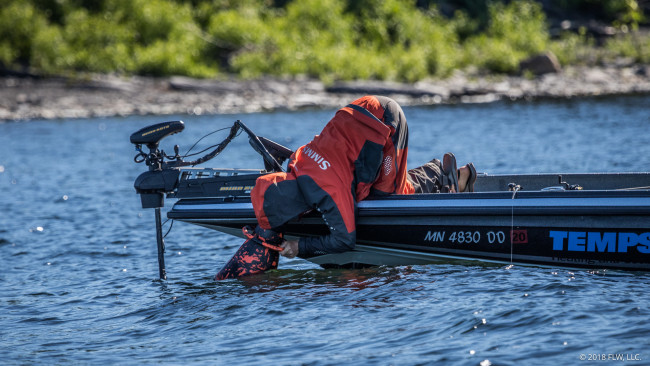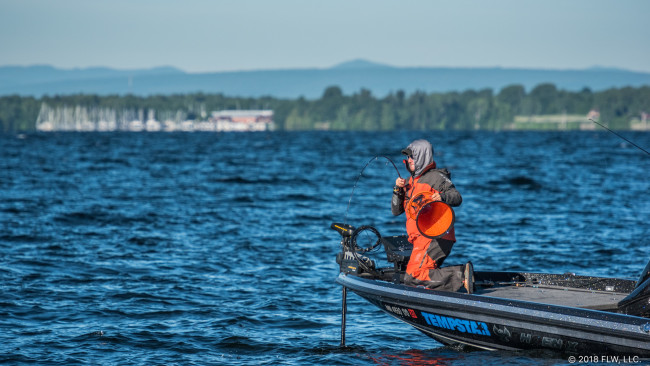How Felix Game Plans the Smallmouth Spawn
A strategy for tournament fishing when brown bass are on beds
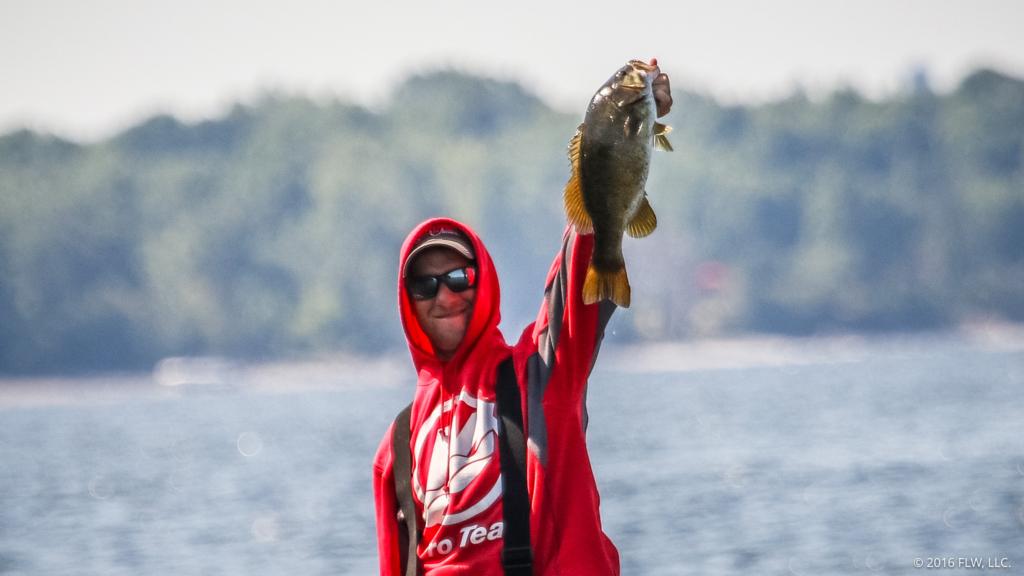
May and June are prime spawning months for Northern smallmouths. It’s a time when the big brown fish are easy to catch. In smallmouth country, what separates a tournament winner from an also-ran often boils down to committing to a smallie spawn-specific practice strategy. Few do it as well or as consistently as FLW Tour pro Austin Felix of Eden Prairie, Minn.
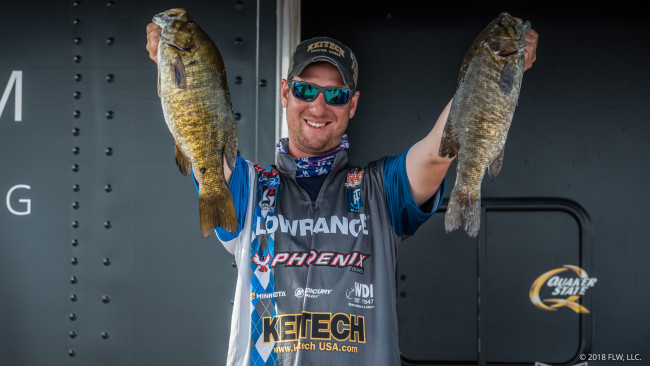
Can smallmouths win?
The first step is determining if smallmouths can win a tournament on a multi-species fishery, or if it’s only a remote possibility. You’ll need to factor in the population trends and other factors. For instance, on the Great Lakes, smallmouths are easily the biggest bass, and the most prevalent. Easy choice there. On a lake such as Minnetonka in Minnesota, which Felix frequents, largemouths dominate throughout most of the tournament season. Yet there’s a window shortly after the bass opener in mid-May when smallmouths are on beds and easy enough to find and catch that they’re well worth targeting. You need to judge the scenario for your fishery.
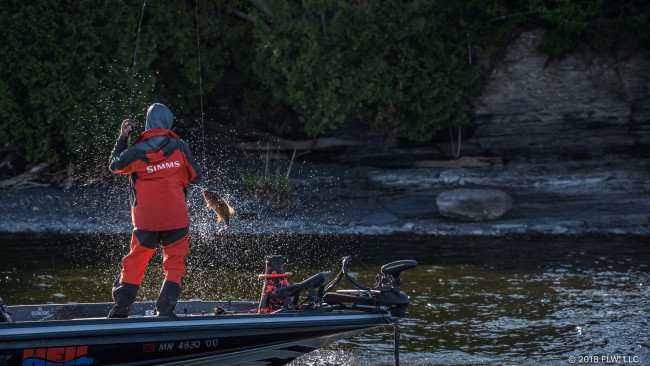
Assess the spawn
According to Felix, the smallmouth spawn isn’t a one-shot deal. On the northern Great Lakes, where the water is deep and windswept and takes longer to warm, Felix has seen bass spawning from May through August. In inland lakes, the window is smaller.
“They usually have about a three-week to about a one-month window,” he says. “There are usually about two cycles, assuming it’s a steady warming trend. There’ll be one wave of shallow fish and one wave of deep fish.”
Shallow areas fire up first because the water column warms faster, so Felix searches for the early spawners in shallow coves. Once that wave of fish finishes, another wave is setting up on the sides of shoals and deeper areas out in the lake.
Felix also finds more shallow spawners in lakes with dirty water or low fishing pressure. Where the water is extremely clear or the fish are targeted more often, he’ll look to deeper waters. Depths can vary from 4 to 6 feet on the shallow end to 8 to 12 feet on the deep end. There are extremes, too, such as at Sturgeon Bay, where Felix spies beds as deep as 20 feet.
Find and inventory
The next step is to locate beds. For Felix, the search is about commitment, and spending his entire practice conducting a high-speed canvass of the fishery. He runs from one likely area to the next then searches with the trolling motor the entire time – checking shallow and deep for “light or dark spots that are the beds, depending on the fishery” – until he has an idea where the better quality fish are bedding. Then he expands from there.
Smallmouths spawn in “pods,” or small groups, usually where there’s a change in bottom content or some sort of object they can relate to. Dock posts, sticks, shallow rocks and other obvious shoreline targets are easy to check. Out deep, Felix monitors the bottom content.
“You’re looking for hard rock shoals, rock veins, single boulders on the sand – anything that’s really inconsistent on the bottom,” he says. “They absolutely can spawn on sand, but you could have a single softball-sized rock on a bunch of sand and the fish will always orient to something like that. Or it could be a 2-foot-long stick, and they’ll choose to spawn on the stick even though it’s only an inch in diameter, just because it’s something different on the landscape. You might think it’s insignificant, but to them it’s important. You don’t find them just in the middle of nowhere.”
Calm conditions make for the best searching. If there’s a chop, Felix seeks out protected areas. A bathyscope like the Flogger (a cone-shaped viewing device designed for underwater sight-seeing) is a good tool for looking through a choppy surface, too, but it can be time consuming to use in practice. While some pros use them extensively, Felix has a different opinion.
“Floggers are really only good for a really niche deal,” he says, “and it’s not actually searching out fish. The Flogger is only really good if you have a fish that you know is on a bed, but it’s too choppy to see. You can check it before you waste time and really fish for him.”
Click here to read more about the Flogger.
Felix’s goal is to find five big fish to catch on tournament morning and to have a good idea what his limit will weigh and where he’s likely to land in the standings if he can get to those five fish first. Knowing the quality of the bass you’ve found is critical, especially on a fishery that’s full of bass that are of a similar weight class and are easy to catch. In that situation, five 4 1/2-pound fish go a lot farther than five 4 1/4-pound fish.
Follow the script
With a plan in place, now comes the easy part.
“When they get on beds they get really aggressive, and they’re about the dumbest fish on earth,” Felix says. “Either a drop-shot or a tube, or even a wacky-rigged Senko are all you need.”
In choppy conditions, Felix might break out the Flogger to check his beds in the tournament, but usually it’s not necessary if he already has them marked from practice. The first pitch is often all it takes to pester a smallmouth into biting. If Felix sets the hook but misses or loses the fish, he swaps baits and pitches in something different. Aggressive smallmouths don’t shy away from striking twice.
Once he has a limit in the boat, Felix starts the process over again. He hunts for kickers if he thinks his weight isn’t good enough for a high finish, and then goes searching for more fish for the next day.
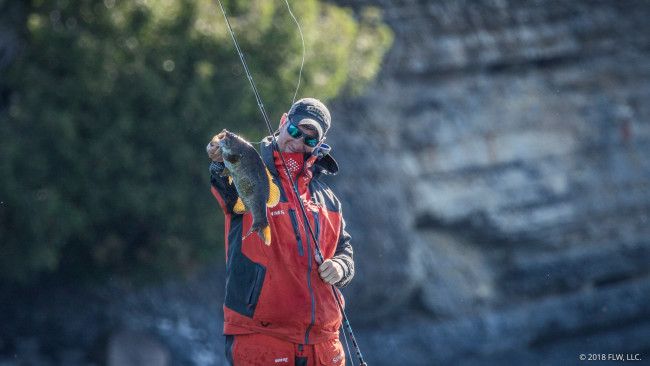
Watch for cruisers
A smallmouth locked on a bed is like a schoolteacher in a bad mood: You can get it fired up pretty quickly. A pitch or two is all it takes.
A cruising smallmouth is a tougher target, but one that shouldn’t go overlooked.
“A lot of times that’s the perfect time to break out a marabou hair jig or drop-shot and sling it out in front of you,” says Felix of cruisers. “Some of those fish you’ll just never get to bite, and others you just have to get it in front of them before they know you’re there.
“A lot of times your bigger fish will end up being those cruisers. When I’m focused on bed-fishing, I’ll always have my drop-shot ready. If I see one cruising I’ll pitch it out there in front of it. You want to lead it 20 feet in front of where it’s heading. Then just hold it there. They’re visual, and they’re really curious. So if you could get a bait out there in front of it you’ll probably catch it.”
Catching smallmouths is always fun. If you disagree, you’re wrong. Winning with smallmouths, particularly when they’re bedding on fisheries with a slew of cookie-cutter fish, takes a specific strategy. Felix has it figured out, and if you practice his approach, you might wind up showing off a big stringer of tournament bronze, too.
